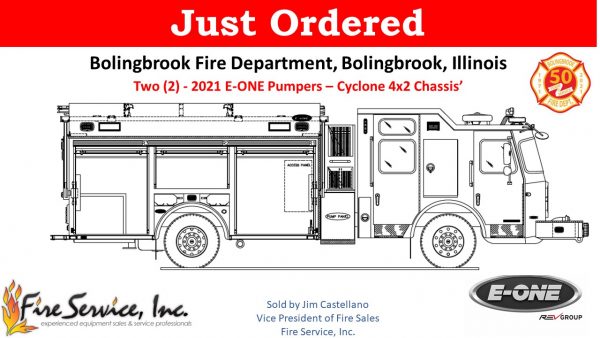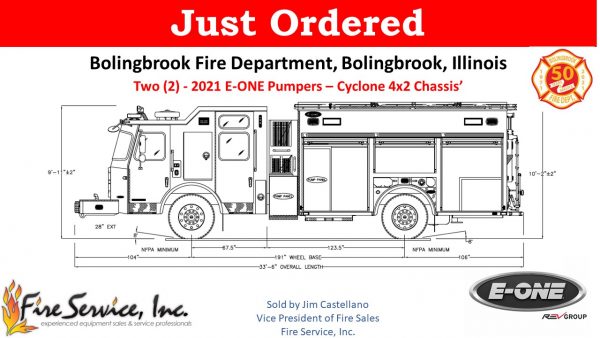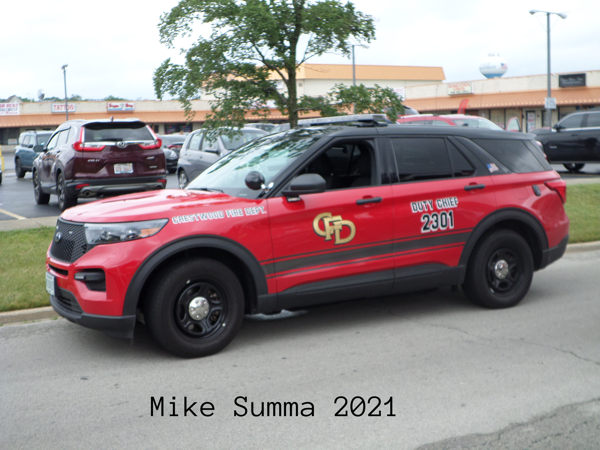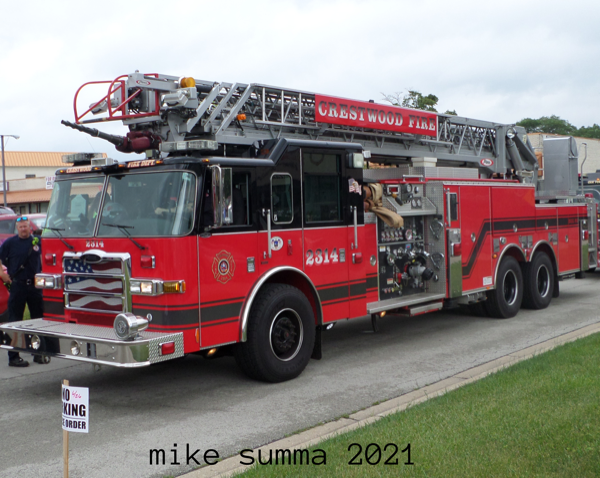From the Fire Service, Inc. Facebook page:
Congratulations and Thank You to the Bolingbrook Fire Department on the recent order of TWO (2) E-ONE custom pumpers. These new units will come complete with the following options:
E-ONE Cyclone 100” wide custom cab w/ raised roof
E-MAX 1500-GPM pump
500-gallon poly tank
Cummins L9 450 HPengine
Severe duty interior
Pioneer LED scene lighting
FireCom HeadSet System
Custom front bumper
Twin arm recessed ladder rackBolingbrook FD has been a long time FSI customer. We appreciate the support, and look forward to continuing our relationship with this busy department. We are proud to help supply the Bolingbrook Fire Department with their fire and EMS apparatus, as they strive to protect their citizens each day.
thanks Danny


































